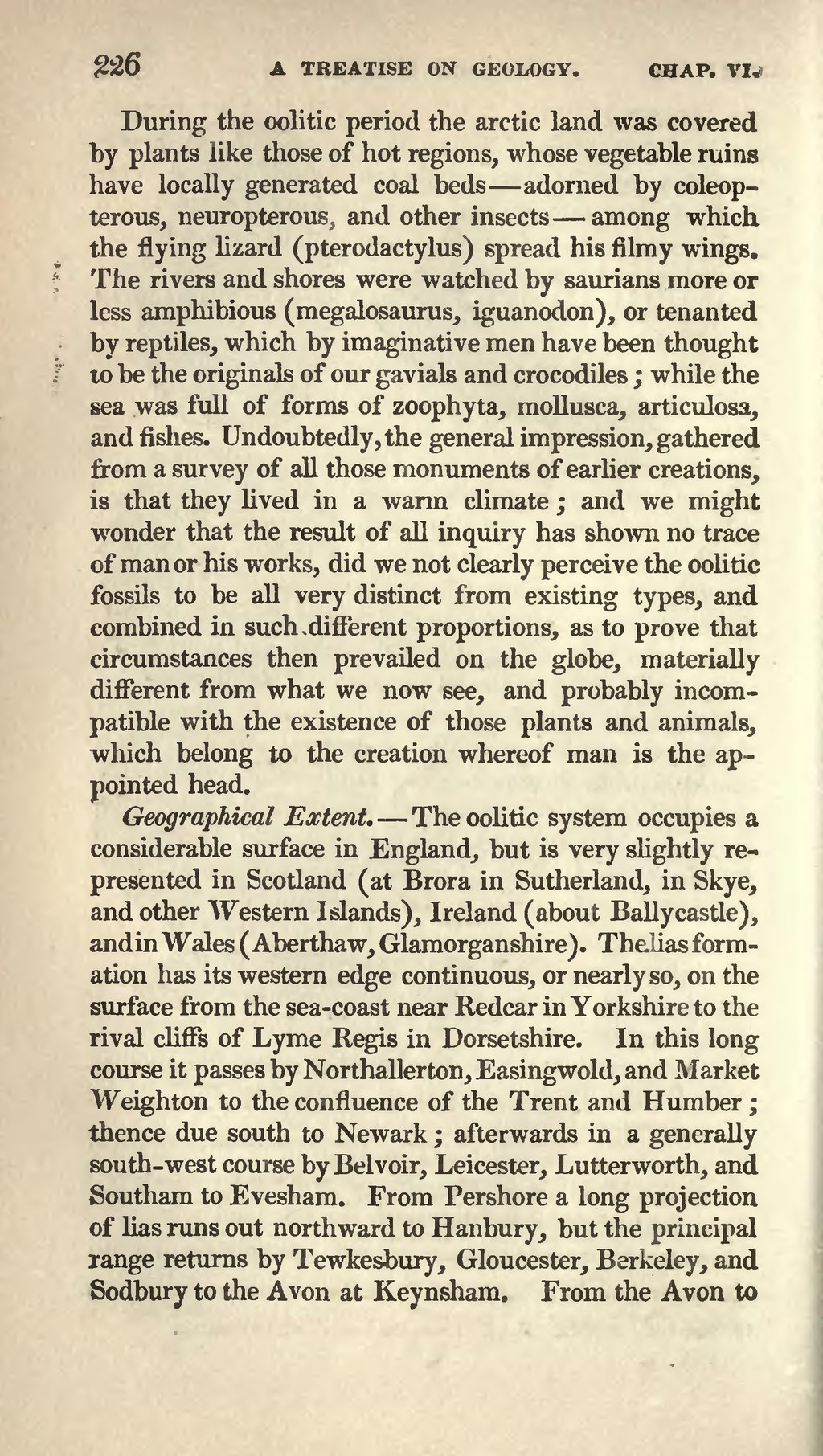During the oolitic period the arctic land was covered by plants like those of hot regions, whose vegetable ruins have locally generated coal beds—adorned by coleopterous, neuropterous, and other insects—among which the flying lizard (pterodactylus) spread his filmy wings. The rivers and shores were watched by saurians more or less amphibious (megalosaurus, iguanodon), or tenanted by reptiles, which by imaginative men have been thought to be the originals of our gavials and crocodiles; while the sea was full of forms of zoophyta, mollusca, articulosa, and fishes. Undoubtedly, the general impression, gathered from a survey of all those monuments of earlier creations, is that they lived in a warm climate; and we might wonder that the result of all inquiry has shown no trace of man or his works, did we not clearly perceive the oolitic fossils to be all very distinct from existing types, and combined in such, different proportions, as to prove that circumstances then prevailed on the globe, materially different from what we now see, and probably incompatible with the existence of those plants and animals, which belong to the creation whereof man is the appointed head.
Geographical Extent.—The oolitic system occupies a considerable surface in England, but is very slightly represented in Scotland (at Brora in Sutherland, in Skye, and other Western Islands), Ireland (about Ballycastle), and in Wales (Aberthaw, Glamorganshire). The lias formation has its western edge continuous, or nearly so, on the surface from the sea-coast near Redcar in Yorkshire to the rival cliffs of Lyme Regis in Dorsetshire. In this long course it passes by Northallerton, Easingwold, and Market Weighton to the confluence of the Trent and Humber; thence due south to Newark; afterwards in a generally south-west course by Belvoir, Leicester, Lutterworth, and Southam to Evesham. From Pershore a long projection of lias runs out northward to Hanbury, but the principal range returns by Tewkesbury, Gloucester, Berkeley, and Sodbury to the Avon at Keynsham. From the Avon to
